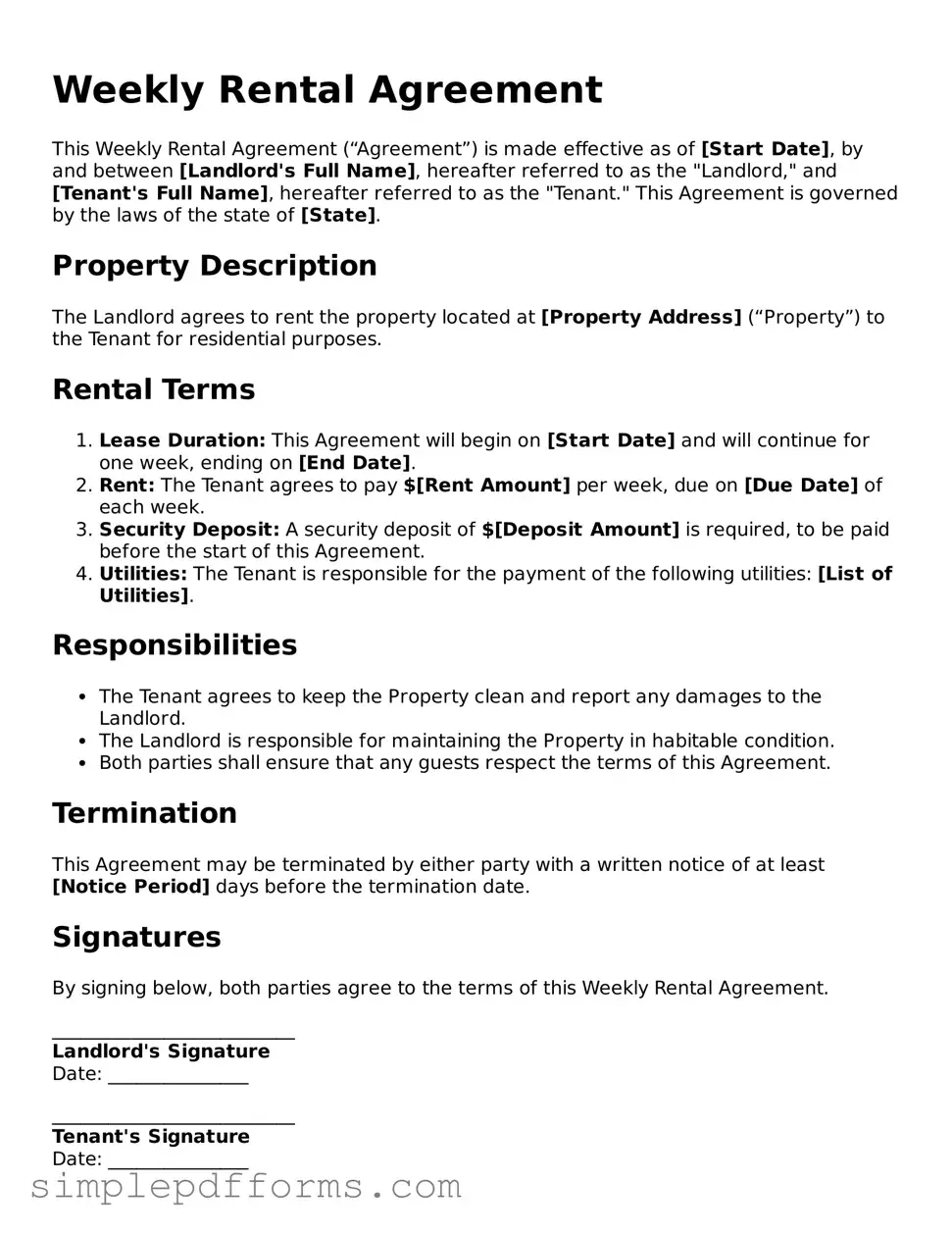Weekly Rental Agreement
This Weekly Rental Agreement (“Agreement”) is made effective as of [Start Date], by and between [Landlord's Full Name], hereafter referred to as the "Landlord," and [Tenant's Full Name], hereafter referred to as the "Tenant." This Agreement is governed by the laws of the state of [State].
Property Description
The Landlord agrees to rent the property located at [Property Address] (“Property”) to the Tenant for residential purposes.
Rental Terms
- Lease Duration: This Agreement will begin on [Start Date] and will continue for one week, ending on [End Date].
- Rent: The Tenant agrees to pay $[Rent Amount] per week, due on [Due Date] of each week.
- Security Deposit: A security deposit of $[Deposit Amount] is required, to be paid before the start of this Agreement.
- Utilities: The Tenant is responsible for the payment of the following utilities: [List of Utilities].
Responsibilities
- The Tenant agrees to keep the Property clean and report any damages to the Landlord.
- The Landlord is responsible for maintaining the Property in habitable condition.
- Both parties shall ensure that any guests respect the terms of this Agreement.
Termination
This Agreement may be terminated by either party with a written notice of at least [Notice Period] days before the termination date.
Signatures
By signing below, both parties agree to the terms of this Weekly Rental Agreement.
__________________________
Landlord's Signature
Date: _______________
__________________________
Tenant's Signature
Date: _______________
